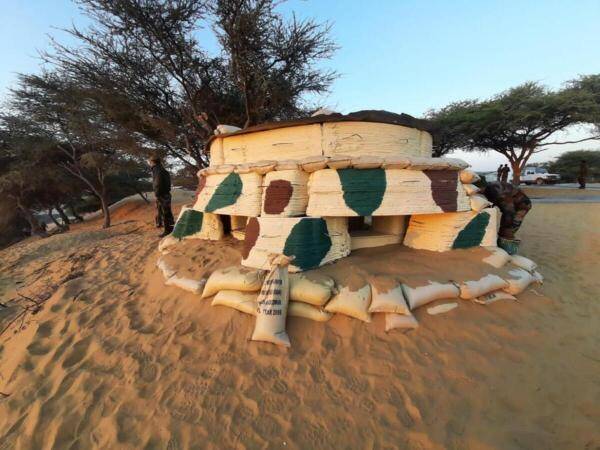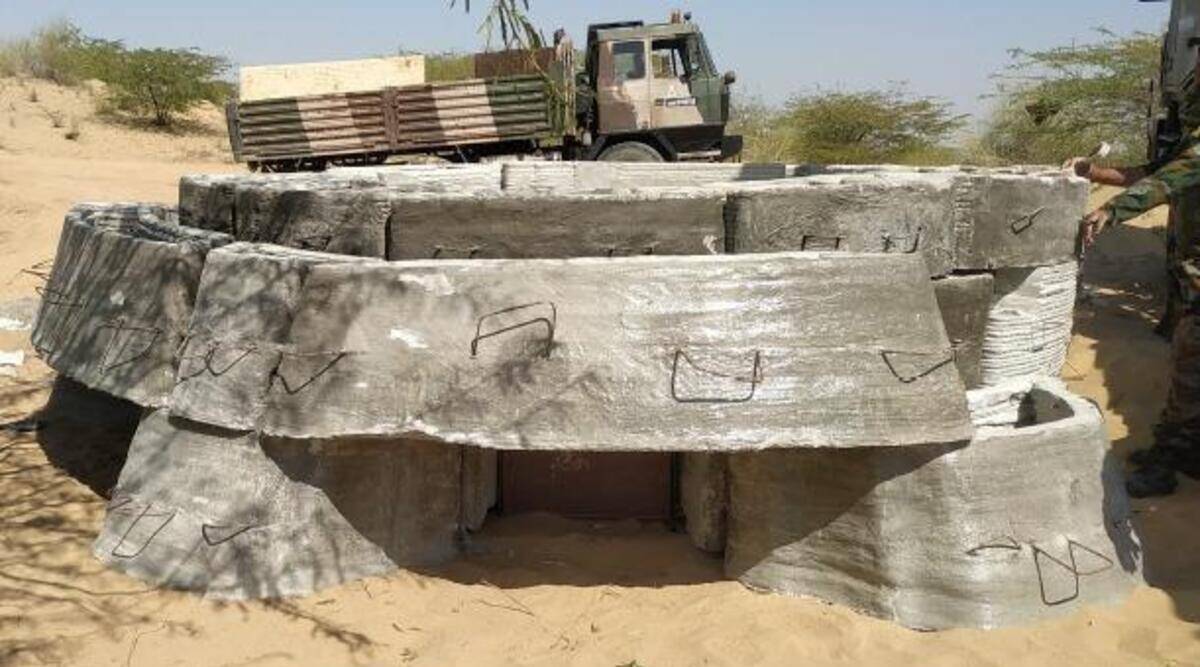Indian Army BMP2 Overlooking Army Convoy And Enjoying Beautiful Scenery At Bank Of A River At Ladakh
You are using an out of date browser. It may not display this or other websites correctly.
You should upgrade or use an alternative browser.
You should upgrade or use an alternative browser.
Line of Actual Control (LAC) : India & Tibet Border Updates
- Thread starter Shashank
- Start date
Stunning View From Indian Army Armed Patrol Boat Over Beautiful Pangong Tso Lake At Elevation Of 13,862 ft At Ladakh Near LAC
Indian Army Sniper Armed With Sako TRG 42 .338 Lapua Magnum Sniper Rifle Along A King Cobra Somewhere At Arunachal Pradesh Near LAC
Hopefully the operators are trained enough with such weapons at such height, because of the low air density the operation parameters change dramatically
A Must Watch Clip On "Chinese Incursion" From Pre 2010 Developments..

 rumble.com
rumble.com

Chinese Incursion At LAC
A Clip About Long Series Of Land Encroachment By Chinese Communist Party Army aka PLAGF From 2010.. ==========WHOMSOEVER IT MAY CONCERN============= Most of the pictures clip or BGM included in the Vi
Indian And Chinese Soldiers Face off In Hundreds
Indian And Chinese Soldiers Face off In Hundreds
Hundreds Of Indian Army And Paramilitary Men Face Off With Chinese At Doklam
Indian Army sets up 3D-printed permanent defences in Eastern Ladakh
As the standoff along the border with China continues, the Indian Army has set up 3D-printed permanent defences at the Line of Actual Control in eastern Ladakh that can withstand tank fire.Indian Army’s Engineer in Chief Lt Gen Harpal Singh said the permanent defences are able to withstand blasts, can be erected within 36-48 hours and relocated from one place to another. He was quoted by news agency ANI as saying, “3D-printed permanent defences have been constructed for the first time by Indian Army’s Corps of Engineers in the desert sector. These defences were trial tested against a range of weapons from small arms to the main gun of T90 tank.”

A 3D-printed shelter for Officers and Junior Commissioned Officers has been constructed in the desert sector and four more such double-storey shelters are also being constructed in the Eastern Theatre at Zuluk, a press release from the Indian Army read. Each shelter can accommodate 64 personnel and construction will take just 25 days, it added.

Indian Army sets up 3D-printed permanent defences in Eastern Ladakh
A 3D-printed shelter for Officers and Junior Commissioned Officers has also been constructed in the desert sector, the Indian Army said.
Indian Army Men Observing Sight Of Indian Air Force CH47FI Flying Over Them Somewhere At Ladakh.
Defence infra push underway in Ladakh amid China standoff
India has inducted thousands of extra troops and modern military weaponry into the Ladakh sector to counter the Chinese military build-up after the standoff began two and a half years ago.
India has inducted thousands of extra troops in Ladakh to counter the Chinese military.The Indian Army is building infrastructure at a rapid pace in eastern Ladakh with a focus on better living experience and improved facilities for soldiers, conservation of modern weapons and equipment deployed there, and supporting faster movement of men and material to deal with any contingency in the midst of the lingering border standoff with the Chinese People’s Liberation Army (PLA) in the sensitive sector, officials familiar with the development said on Tuesday.
India has inducted thousands of extra troops and modern military weaponry into the Ladakh sector to counter the Chinese military build-up after the standoff began two and a half years ago. The altered dynamic along the contested Line of Actual Control (LAC) necessitated the infrastructure push aimed at enhancing efficiency of the army’s deployments, said one of the officials cited above, who asked not to be named.
The steps taken by the army to support its forward deployments along LAC include building of modular shelters for troops deployed at heights of up to 18,000 feet, habitat for reserve troops in rear locations, storage facilities for tanks, artillery guns and other equipment, underground facilities for ammunition storage, airfields, and new roads, bridges and tunnels in difficult terrain for improved connectivity with forward areas.
The army has also built ponds in high altitude areas in Ladakh to provide drinking water to troops.
Infrastructure is not only coming up in Ladakh but also in the central (Uttarakhand) and eastern sectors (Sikkim and Arunachal Pradesh) to cater to the army’s needs and build capacities to deal with emerging challenges, said a second official.
“It’s very heartening to see the push being given to infrastructure development along LAC. At the altitudes at which the LAC lies, the quality of infrastructure will be a key factor in both peacetime border management and war,” said former Northern Army commander Lieutenant General DS Hooda (retd).
To be sure, PLA has significantly modernised defence infrastructure across LAC after the standoff began in May 2020.
The Indian Army’s infrastructure push comes alongside concerted efforts to upgrade military capability with a variety of weapons and systems including artillery guns, swarm drone systems that can carry out offensive missions in enemy territory, longer range rockets, remotely piloted aerial systems and high-mobility protected vehicles. The army is also pursuing the development of light tanks for mountain warfare and futuristic infantry combat vehicles (FICVs), as previously reported.
In January 2022, former army chief General Manoj Mukund Naravane said the silver lining to the border crisis was that India used it as an opportunity to fast-track infrastructure development, undertake doctrinal reviews and fill operational voids through emergency purchases.
On Tuesday, the army sought proposals from domestic vendors for 180 canister-launched anti-armour loiter systems under the emergency procurement route, and integrated drone detection and interdiction systems, the officials said.
Last week, the army said it will construct modular, 3D-printed, next generation bunkers to provide better protection to front-line soldiers guarding the country’s border with China. These bunkers will come up near LAC in Ladakh next year onwards, and will be able to withstand a direct hit by a tank shell.
It is also heartening that the latest technology like 3D printing and pre-engineered buildings is being utilised for creating defences and habitat, Hooda said. “At the minimum, it will halve the construction time,” he added. While 20-odd 3D-printed bunkers have already been made, the army will construct hundreds of such bunkers in Ladakh and the numbers will gradually increase.
Despite four rounds of disengagement from Galwan Valley, Pangong Tso, Gogra (PP-17A) and Hot Springs (PP-15), the Indian and Chinese armies still have more than 60,000 troops each and advanced weaponry deployed in the Ladakh theatre. The Indian and Chinese armies have held 16 rounds of talks so far, but problems at Depsang in Daulet Beg Oldi sector and Charding Nullah Junction (CNJ) in Demchok sector are still on the negotiating table.

Defence infra push underway in Ladakh amid China standoff
India has inducted thousands of extra troops and modern military weaponry into the Ladakh sector to counter the Chinese military build-up after the standoff began two and a half years ago.
Visited PKS's Trishul early this morning after ages & stumbled upon this channel on his recommendation.
Although it's more than a year & half old it's not dated in the least . Excellent perspective by P Stobdan on the politics within the Himalayas over time & how we've failed to acknowledge it apart from taking assistance from it to frame our narrative as opposed to the Chinese who collect every little nugget to build up their case or to strengthen it .
Definitely worth a view for the fresh perspective it brings to a vexed age old problem.
P S - he's written a wonderful book as well elaborating the same points he's made here which's been on my Amazon wish list since long . Time to get it . For those interested P Stobdan - a practising Ladakhi Buddhist which isn't the same as Tibetan Buddhism & shares a love hate relationship with it frequently being at odds with it , is an ex IFS officer & ex Indian ambassador to Kyrgyzstan besides being a native Ladakhi .

